White color in the interior
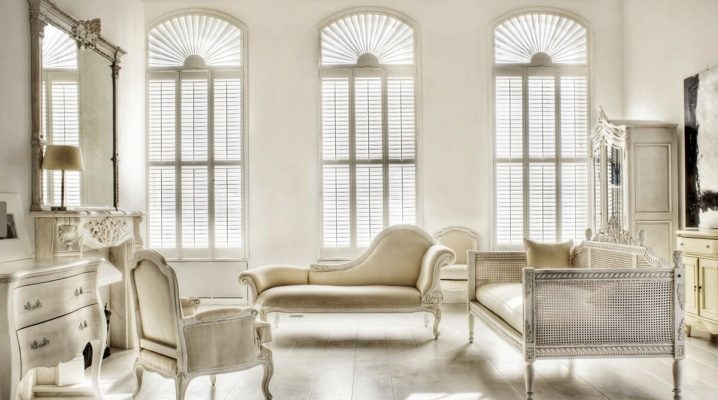
Psychological research proves that color is of great importance for the psycho-emotional state of a person. A certain shade can relax, pacify or cause aggression, despondency, irritation. Therefore, when thinking over the design of your home, you must proceed not only from fashion trends and beautiful pictures, but also the psychotype of all family members. White is always at the forefront of fashion, is universal and has a beneficial effect on the mood. It symbolizes perfection and allows you to play up the interior in completely different ways. This is the best, cleanest background on which you can place any composition you want. The shades of the snow-white range are one of the most popular in the design of apartments and private houses.
White blends beautifully with other palettes to show objects in their most favorable light, and to add sophistication and elegance to the room.





Advantages and disadvantages
For all its beauty, white color is endowed not only with obvious advantages, but also with very significant disadvantages that must be taken into account when forming a design. Let's first highlight the benefits.
- Versatility. You've probably noticed that in art galleries, walls are most often of the lightest and most neutral shade. He is chosen in order to show the demonstrated objects of art and installations as profitably as possible. After all, whiteness is the best possible background. You can absolutely not limit the flight of your creative imagination, choose interior items and decor of any color.
- Variability. Another plus of a light neutral background is that if you want a change, you don't have to start a renovation. It is enough to change the accents, change the color scheme of additional shades, and the room will sparkle with completely different colors, acquire a different mood.
- Faultlessness. Of course, creating a snow-white interior also has its own rules, but the risk of making mistakes in color is minimal, even if you don't hire a professional designer. The choice of a snow-white background as the main one practically eliminates the percentage of erroneous choice of additional shades.
- Increased space. This is a very important plus for small spaces and rooms with unimportant natural light. It is whiteness that is able to saturate the space with air, freshness, visually expand it, and raise the ceilings.
- Durability. Choosing whiteness as a general design, you don't have to worry that the color will fade in the sun and change its shade, fade. On the contrary, it works as a great natural reflector of the sun's rays.
- Expressiveness. Whiteness allows not only to emphasize the color, but also the shape. Against such a background, beautiful, unusual objects will look the most advantageous, noticeably, effectively, texture, shadows and volume will be emphasized. The background will not draw attention to itself.
- Stylish diversity. Regardless of your style preferences, snow white will be appropriate there. He is good in laconic design solutions: minimalism, Scandinavian style, and in bright, catchy Moroccan, French variations. Of course, the classic interior will also be great with these shades.





However, in fairness, it is necessary to mention the shortcomings faced by the owners of snow-white apartments and houses.
- Impracticality. This is the main disadvantage of snow-white. Alas, for all its beauty and splendor, the color is quite easily soiled and requires a special attitude and care. Stains, dust, debris are visible on it, it emphasizes some flaws very clearly. Pet owners and families with small children should be especially careful. However, if 15 years ago this argument against could have been decisive, today, with modern harvesting capabilities, it is not so categorical. There are furniture and building surfaces of this quality that are easy to clean and do not attract dust.
- Feeling of sterility. For many, snow-white walls evoke persistent associations with government premises, hospitals, and seem uncomfortable. To prevent your home from becoming like this, you need to think over the selection of shades, avoiding skewing in the cool range. In addition, whiteness also needs to be limited like any other color. So that the room does not seem cold, you need to observe the measure and be sure to dilute the whiteness with the warmth of powdery tones, ivory, the right textures and textures, and beautiful decor.
- Monotony. Boring, dull, uninteresting - this is how many describe the interior in snow-white tones. This is partly true, the white color itself is rather faceless. Therefore, it is so important to revive it, finish the composition, adding unusual furniture, bright colors, original textures to it. This kind of design resembles a drawing on a blank sheet of paper, of course, while it is empty, it looks boring.
- Oversaturation risk. This is the flip side of the medal of monotony, since whiteness practically does not impose any obligations on the choice of color and shape, many begin to overdo it. As a result, instead of a bright, light, fresh design, a stuffy, cluttered, overloaded with details and colors of the room appears.
- Fatigue. Another risk associated with a lot of white in front of the eyes. You can just get tired of him, he will cut your eyes with his sharp whiteness. This problem can be solved - designers recommend relying on false white shades: beige, ivory, subtle gray, beige. Such neutral combinations, with a small addition of pure white, will make a more beneficial impression, will not tire the eyes.



What is it combined with?
The shades of white are quite varied and go well with other tones. Thanks to this property, designers like to take white as the main one, diluting with the nuances of other palettes. Whiteness will perfectly accentuate interior items and decor in red, blue and black. These 3 palettes are considered favorites in combination with pure white.

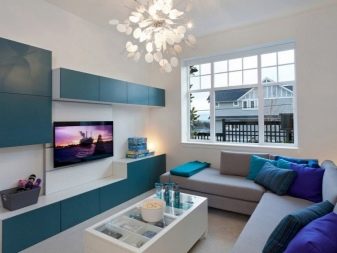
If you like bright solutions, combine whiteness with trendy yellow or orange. A more mysterious and graceful design is obtained from a combination of whiteness with purple, lilac, lavender. If you're looking to create a space that is relaxing, go for a blend of whiteness and greenery. The classic version is whiteness with a brown tint.
In any case, proceed primarily from the goals of your design, your personal tastes and strive for the combination to be harmonious and balanced.
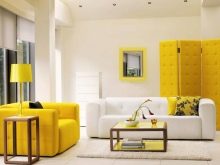


Despite the seeming monotony, white has many shades and varieties, from which there is something to choose even for the most discerning person. The palette ranges from icy in temperature to very warm shades. The most popular shades in interior design:
- lactic;
- Ivory;
- pearlescent white;
- snow blue;
- antique;
- pearl;
- chalky;
- creamy;
- alabaster;
- pure white proper;
- ashen;
- parchment.

Depending on which additional and accent color you want to choose for the design, the shade of the base is also selected. Whiteness will perfectly emphasize all tones of coffee, terracotta and in general all natural colors. By varying the number of shades, you can create almost any stylistically directed interior based on whiteness. The most successful combinations, in terms of design:
coffee brown and white colors create the most comfortable, classic combination;

beige pastels and pastels in other shades will give the room tenderness, sophistication, romance and softness;

if you like contrast, choose black and white variations, as well as combinations with blue and red interior items, the last 2 shades will be very appropriate in modern design for a young family;


youthfulness of the soul can be emphasized by combinations with yellow, purple, green - these are very interesting solutions;
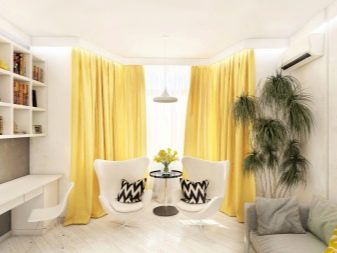

if you want to create the most aristocratic and sophisticated design, turn to the tandem of whiteness with gray, pearl, light blue.


Give up the idea of monochrome design, psychologists believe that it negatively affects the emotional state, can cause despondency, apathy, irritability. In such apartments, you can easily go into a state of depression. Consider also the temperature of the selected shades, for example, beige, cream and milk will perfectly fit into the composition of natural shades, natural fabrics and materials.
Having decided on the temperature regime, do not violate it - you should not combine cool and warm shades in the design of one room.

Suitable styles
We have already mentioned that white will perfectly fit into almost any style solution. However, there are favorite styles, where whiteness plays not the last, and sometimes the first violin.
Scandinavian
Whiteness is one of the three whales that Scandinavian style stands on. You can safely paint walls, floors, ceilings in this shade, buy white furniture, decor with elements of snow-white ornaments and prints.
Apart from white, only black and gray play such a role in such designs. In any case, white is indispensable in this style.


Classic
Here, warm colors come out on top - antique, milky, creamy, cream, beige. They perfectly accentuate natural wood furniture, expensive high-quality textiles, status decor. Here the white may not play the role of the first violin, but sing along with the second or even the third voice.


Loft
The industrial style, very popular in recent years, is unthinkable without white, because this is one of the tones that allows for rough finishes, for example, bleached walls, lime beams, and so on. Cool colors are most often used here.


Provence
It is simply impossible to imagine Provence without bleached wood, a light background, on which soft, elegant pastels are comfortably and freshly located. Provence and white are inextricably linked.


Modern
This luxurious style implies complex color combinations, a lot of radiance, complex combinations, in which white fits perfectly as an accent, but not in its pure form.

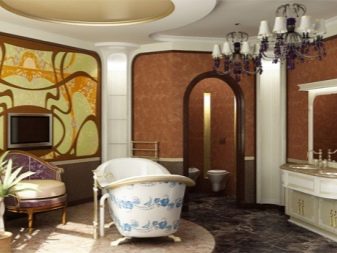
Art deco
It is both austere and striking design, rational and expressive. Art Deco has a lot of geometry, dark elements that require a light background.
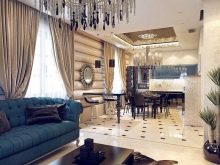


Minimalism
This style cannot exist a priori without whiteness. Since its main features are brevity, neutral tones, simple shapes, white is often taken as a basis and slightly diluted with other tones and scales.
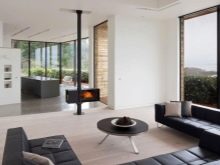


High tech
This style relies on technology, the interior itself, as it were, acts as a background for the demonstration of technical innovations. This means that white will be very appropriate here, it is the perfect background for anything.

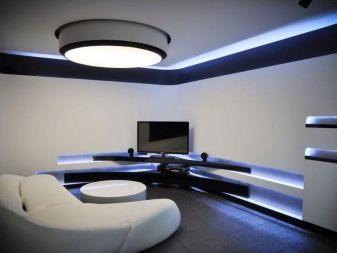
Pop Art
This is a very bright style that requires contrasting details, red, black, catchy, which means that a white background will be simply irreplaceable here. After all, it is he who is able to emphasize the expressiveness of forms and balance the brightness of colors.



Grunge
Sloppy grunge uses whiteness to a minimum, as accents. White pillow or blanket, a lamp by an armchair or bed, textiles, curtains. In small doses, white perfectly emphasizes the gray and coldness of grunge.


Use in decoration
As for the combinations in finishing, white looks great with pastels, wood and all its variations of tones. These possibilities of color can be safely used to create an interior in any style. In terms of materials, white marble, bleached and painted wood, wallpaper, textiles and white decor are very relevant.
Choosing this basic scale, you need to think about what exactly you will decorate in this color - walls, ceiling, floor.


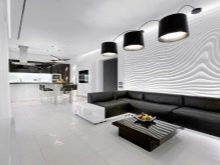
Walls
This is a very popular design solution used by both professionals and amateurs. This happens for the following reasons:
- regardless of the chosen finishing materials (brick, stone, liquid or ordinary wallpaper, white plaster), such walls will visually expand the room, make it more spacious and lighter;
- the simplicity of neutral pastels ideally emphasizes the perfection and conciseness of forms, textures;
- a great background for bright, catchy, expressive details, depth and volume of non-standard silhouettes;
- the white wall does not draw attention to itself, does not distract from expensive furniture, antique decor, natural wood and other materials;
- the design of the room according to the classical canons requires a light tone of the walls, even if they are brick.

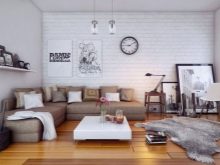

Designers believe that walls decorated in a white palette are always relevant, the design will not go out of style in a couple of years after its implementation.
Most often, wallpaper is used as a material. They are presented so widely that they allow you to choose almost any shade, combine colors, creating non-trivial compositions. To keep the walls from looking bare, you need to use other palettes as decoration. They can be used as:
- patterns and ornaments on a white background;
- inserts, combinations of monochromatic wallpapers of different colors;
- the color can be correctly emphasized with the help of decor and interior items on a clean monochrome background.



Floor
If you want a stylish, custom design, consider white as a floor covering. This will provide additional space expansion, which is important for small and dark rooms. There are many shades and materials. In any case, in such a house you will feel comfortable and cozy, in addition, such a decision will definitely delight your guests and make an indelible impression on them.



The snow-white floor is a very elegant design element, which has a number of advantages:
- status appearance, feeling of expensive design;
- a great way to highlight beautiful furniture, original interior items;
- a very effective detail that gives expressiveness to any design;
- it is quite easy to take care of the floor in a timely manner, since the dirt is clearly visible.
Light pastel floors can be made in tiles, bleached wood and imitations: laminate, linoleum, parquet. In any case, such a surface will increase the space and give comfort to the room.


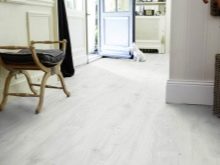
Ceiling
The snow-white ceiling is a classic of any interior. Moreover, this color scheme visually makes the room taller, lighter, more voluminous. The ceiling is located above the head, and made in color, it can press, negatively affect the emotional state, reduce space, and distract attention from the design. The neutral appearance of the ceiling has only advantages, a beautiful chandelier is luxuriously visible on it, it does not press psychologically.
In modern design, the ceiling can be not only matte, but also glossy, have a variety of shapes and decor: beams, ledges, transitions, stucco. It all depends on the chosen style and your taste.






White as an accent
Another way to use white in the design of an apartment or house is as an accent color. It can be furniture, interior items, decor, textiles. Despite being soiled, white furniture is very popular, especially since modern materials allow you not to worry about high-quality and easy cleaning. White accents in a room are capable of:
- give refinement, grace, emphasize shape and color;
- visually increase the space and volume of the living room, hallway, bedroom or kitchen;
- add coziness, a sense of comfort to the interior.



Light furniture is perfect for any room, it will fit perfectly:
- into the bedroom and make it more calm, the atmosphere in it is pacifying;
- into the living room, giving it a sense of simple luxury and elegance;
- into the kitchen, increasing it visually.


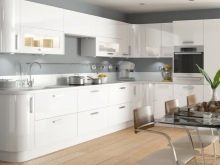
In addition to furniture, textiles play a very important role in design, in particular curtains. They are the ones who are able to complete any composition and make the room well-groomed and cozy. White curtains are capable of:
- add light to the room;
- visually "pull" the room up;
- add cool notes on a hot day, reflect the sun's rays;
- make the room more elegant and interesting.



Beautiful design examples
- Living room;



- Bedroom;



- Kitchen;



- Hallway;


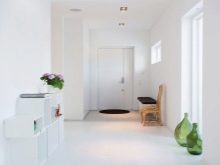
- Children's;



- Bathroom.
















The comment was sent successfully.